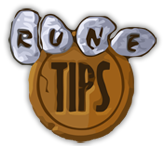-
Posts
10 -
Joined
-
Last visited
Content Type
Profiles
Forums
Gallery
Events
Blogs
Everything posted by Putin
-
180m hp :^)
- 114 replies
-
- High Level Players
- Current Events
-
(and 1 more)
Tagged with:
-

Quasar | Dicefluid
Putin replied to Quasar's topic in BlogScape (Ongoing Progress Reports and Goals)
- 456 replies
-
- Boss Hunting
- Endgame
-
(and 3 more)
Tagged with:
-
- 114 replies
-
- High Level Players
- Current Events
-
(and 1 more)
Tagged with:
-
mfw i dont know how to do that [bleep]ing deo
- 114 replies
-
- High Level Players
- Current Events
-
(and 1 more)
Tagged with:
-
ayy lmao + 110m def
- 114 replies
-
- High Level Players
- Current Events
-
(and 1 more)
Tagged with:
-
- 114 replies
-
- High Level Players
- Current Events
-
(and 1 more)
Tagged with:
-
2k14 was pretty good even though i got really lazy last few months, got 2 200ms 120loldg and 99div, who knows what will happen in 2k15 as i constantly swap goals and what new op updates happen
- 114 replies
-
- High Level Players
- Current Events
-
(and 1 more)
Tagged with:
-
le 80m mining
- 114 replies
-
- High Level Players
- Current Events
-
(and 1 more)
Tagged with:
-
m8 wheres 25/25 sneakerpeepers stay bad
- 2328 replies
-
- High Level Players
- RuneScape
-
(and 8 more)
Tagged with:
-

My Little Brony: Friendzone is Tragic
Putin replied to Bxpprod's topic in BlogScape (Ongoing Progress Reports and Goals)
thats a really fabulous range -

IAmA Stormy Day - Construct
Putin replied to tgf's topic in BlogScape (Ongoing Progress Reports and Goals)
selling 10k ea -

Quasar | Dicefluid
Putin replied to Quasar's topic in BlogScape (Ongoing Progress Reports and Goals)
good job comrade- 456 replies
-
- Boss Hunting
- Endgame
-
(and 3 more)
Tagged with:
-
actual announcement is james is a [bleep] and 1.6b oa
- 114 replies
-
- High Level Players
- Current Events
-
(and 1 more)
Tagged with:
-
mish confirmed gay on jagex twitter
- 114 replies
-
- High Level Players
- Current Events
-
(and 1 more)
Tagged with:
-

Quasar | Dicefluid
Putin replied to Quasar's topic in BlogScape (Ongoing Progress Reports and Goals)
From Wikipedia, the free encyclopedia For other uses, see North (disambiguation). A 16-point compass rose with north highlighted and at top. This article needs additional citations for verification. Please help improve this article by adding citations to reliable sources. Unsourced material may be challenged and removed. (December 2011) North is a noun, adjective, or adverb indicating direction or geography. North is one of the four cardinal directions or compass points. It is the opposite of south and is perpendicular to east and west. Contents [hide] 1 Etymology2 Mapping3 Magnetic north and declination4 Roles of north as prime direction5 Roles of east and west as inherently subsidiary directions6 Cultural references7 See also8 References9 External links Etymology[edit]The word north is related to the Old High German nord, both descending from the Proto-Indo-European unit ner-, meaning "down" (or "under"). (Presumably[according to whom?] a natural primitive description of its concept is "to the left of the rising sun".) The Latin word borealis comes from the Greek boreas "north wind, north", which, according to Ovid, was personified as the son of the river-god Strymon, the father of Calais and Zetes. Septentrionalis is from septentriones, "the seven plow oxen", a name of Ursa Maior. The Greek arktikos is named for the same constellation, and is the derivation of the English word "Arctic". Other languages have sometimes more interesting derivations. For example, in Lezgian, kefer can mean both 'disbelief' and 'north', since to the north of the Muslim Lezgianhomeland there are areas formerly inhabited by non-Muslim Caucasian and Turkic peoples. In many languages of Mesoamerica, "north" also means "up". In Hungarian the word for north is észak, which is derived from éjszaka ("night"), since in the Northern Hemisphere the Sun never shines from the north. Mapping[edit]By convention, the top side of a map is often north. To go north using a compass for navigation, set a bearing or azimuth of 0° or 360°. North is specifically the direction that, in Western culture, is treated as the fundamental direction: North is used (explicitly or implicitly) to define all other directions.The (visual) top edges of maps usually correspond to the northern edge of the area represented, unless explicitly stated otherwise or landmarks are considered more useful for that territory than specific directions.On any rotating object, north denotes the side appearing to rotate counter-clockwise when viewed from afar along the axis of rotation.Magnetic north and declination[edit]Magnetic north is of interest because it is the direction indicated as north on a properly functioning (but uncorrected) magnetic compass. The difference between it and true northis called the magnetic declination (or simply the declination where the context is clear). For many purposes and physical circumstances, the error in direction that results from ignoring the distinction is tolerable; in others a mental or instrument compensation, based on assumed knowledge of the applicable declination, can solve all the problems. But simple generalizations on the subject should be treated as unsound, and as likely to reflect popular misconceptions about terrestrial magnetism. Maps intended for usage in orienteering by compass will clearly indicate the local declination for easy correction to true north. Maps may also indicate grid north, which is a navigational term referring to the direction northwards along the grid lines of a map projection. Roles of north as prime direction[edit]The visible rotation of the night sky around the visible celestial pole provides a vivid metaphor of that direction corresponding to up. Thus the choice of the north as corresponding to up in the northern hemisphere, or of south in that role in the southern, is, prior to world-wide communication, anything but an arbitrary one. On the contrary, it is of interest that Chinese and Islamic culture even considered south as the proper top end for maps.[citation needed] In Western culture: Maps tend to be drawn for viewing with either true north or magnetic north at the topGlobes of the earth have the North Pole at the top, or if the Earth's axis is represented as inclined from vertical (normally by the angle it has relative to the axis of the Earth's orbit), in the top half.Maps are usually labelled to indicate which direction on the map corresponds to a direction on the earth,usually with a single arrow oriented to the map's representation of true north,occasionally with a single arrow oriented to the map's representation of magnetic north, or two arrows oriented to true and magnetic north respectively,occasionally with a compass rose, but if so, usually on a map with north at the top and usually with north decorated more prominently than any other compass point.Up is a metaphor for north. The notion that north should always be up and east at the right was established by the Greek astronomer Ptolemy. The historian Daniel Boorstinsuggests that perhaps this was because the better-known places in his world were in the northern hemisphere, and on a flat map these were most convenient for study if they were in the upper right-hand corner.[1]Roles of east and west as inherently subsidiary directions[edit]While the choice of north over south as prime direction reflects quite arbitrary historical factors, east and west are not nearly as natural alternatives as first glance might suggest. Their folk definitions are, respectively, "where the sun rises" and "where it sets". Except on the Equator, however, these definitions, taken together, would imply that east and west would not be 180 degrees apart, but instead would differ from that by up to twice the degrees of latitude of the location in question, andthey would each move slightly from day to day and, in the temperate zones, markedly over the course of the year.Reasonably accurate folk astronomy, such as is usually attributed to Stone Age peoples or later Celts, would arrive at east and west by noting the directions of rising and setting (preferably more than once each) and choosing as prime direction one of the two mutually opposite directions that lie halfway between those two. The true folk-astronomical definitions of east and west are "the directions, a right angle from the prime direction, that are closest to the rising and setting, respectively, of the sun (or moon). Cultural references[edit]Being the "default" direction on the compass, North is referred to frequently in Western popular culture. Some examples include: The phrase "north of X" is often used to mean "more than X" or "greater than X", i.e. "The world population is north of 7 billion people" or "north of 40 [years old]".See also[edit]NordicityList of northernmost itemsNordicismSeptentrionalReferences[edit]Jump up^ Daniel Boorstin (1983). The Discoverers. Random House/J.M.Dent & Sons. p. 98. External links[edit] The dictionary definition of north at Wiktionary[hide] v t e Compass direction Cardinal and Ordinal directions North Northeast East Southeast South Southwest West Northwest The eight principal winds Tramontane Gregale Levant Sirocco Ostro Libeccio Ponente Mistral Categories: Orientation (geometry)- 456 replies
-
- Boss Hunting
- Endgame
-
(and 3 more)
Tagged with:
-
ive been afk with work expect a big announcement coming soon =33333333333
- 114 replies
-
- High Level Players
- Current Events
-
(and 1 more)
Tagged with:
-

Quasar | Dicefluid
Putin replied to Quasar's topic in BlogScape (Ongoing Progress Reports and Goals)
G G G G G G G G G G G G G G G G G G G G G G G G GG G G G G G G G G G GZ ON LONGEST G SPAM IN HISTORY OF CLAN- 456 replies
-
- 1
-

-
- Boss Hunting
- Endgame
-
(and 3 more)
Tagged with:
-
using tree shaking scrim to finish off imps managed to get 60m, only missing pirate and the D imp ;)
- 114 replies
-
- High Level Players
- Current Events
-
(and 1 more)
Tagged with:
-
cant please if u dont last long :(
-
shame loot from crystal imp is shit, ill finish off other implings later
- 114 replies
-
- High Level Players
- Current Events
-
(and 1 more)
Tagged with:

